Many of the illustrations of the medieval and renaissance show shoemakers working without any visible form of apron to protect their clothes. However, as you get to the 15th and 16th centuries, aprons become more common, and once you are in the 17th century, one is hard pressed to find a shoemaker or cobbler without an apron. By the 18th century, it is documented as an essential part of the shoemaker’s kit in Garsault’s work on shoemaking. As such, let us focus on the earlier examples which are fewer and far between.
There are many tradeskills that require the use of an apron, from bakers, cooks, and black smiths, to name just a few. Their aprons differ from each other in some ways, but as this focus is on shoemakers, we will focus on evidence accordingly, but noting that other trades can often wear similar aprons. As a cookie, here is an image from the 1555 “Das Hausbuch der Mendelschen” in the Stadtbibliothek Nürnberg showing a waist-tied apron.
Most of the bona fide images of shoemaker’s aprons come from the 15th and 16th centuries, though the aprons styles reflected could also have been worn by other trade skills as mentioned above.
My thanks to the usual suspects of Larsdatter and Marc for the images. Below, take a look at three different images of the same style of 15th century apron – the first a sculpture of a shoemaker from the first half of the 15th century taken from “Historical Gleanings,” CIBA Review 34, June 1940 p1243. The second is from Guy Marchand’s bookplate, Paris, 1496 (from Jãfvert, 1937). The third is from an illustration of Aristotle’s Ethics, Politics, and Economics (Rouen I.2 927, fol. 145r), 15th century. Note that none of them wrap around the neck, but instead are pinned to the outer garment just below the neck.
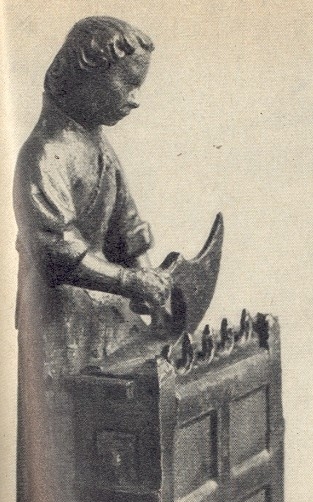
|
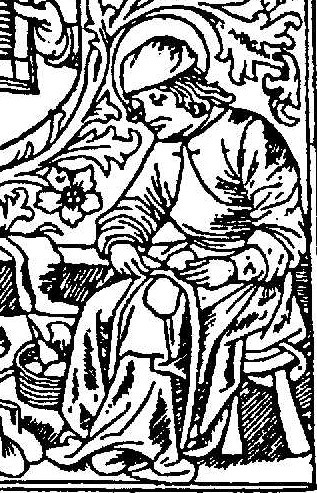
|
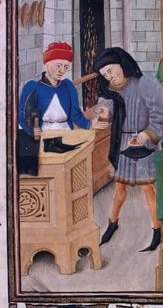
|
||
This style continues into the 16th century, as an image from a 16th century disc shows (from Marc). We also have an image from the second half of the 16th century, signed “Reymond Pierre, emailleur à Limoges” (from Forrer, Robert. Archäologisches zur Geschichte des Schuhes aller Zeiten, 1942). Both the apprentice and the master are wearing this type of apron.
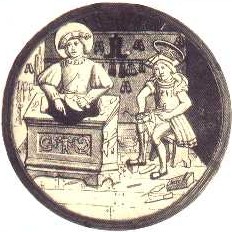
|
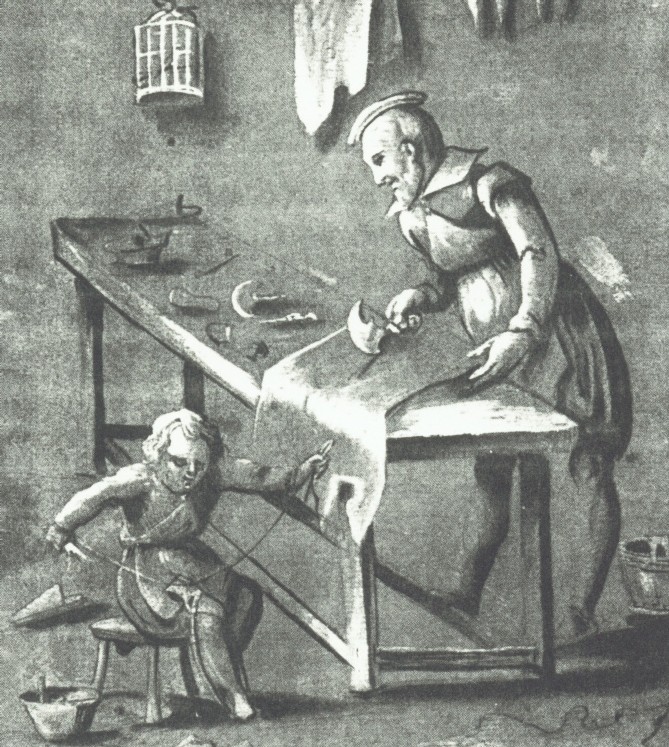
|
|
Although common aprons that strap up around the neck and around the waist are used by blacksmiths as early as the 14th century (c.f. the images of black smiths) there are also some waist-only aprons like the one above, as well as a 1525 apron from the same source. However, in the 16th century, we also begin to see shoemakers wearing aprons that strap around the neck. The middle image is a 1568 woodcut from the “Eigentlicher Beschreibung aller Stände auf Erden,” by Jost Ammon and Hans Sack. The image to the right is from a 1583 illustration in “Das Hausbuch.”
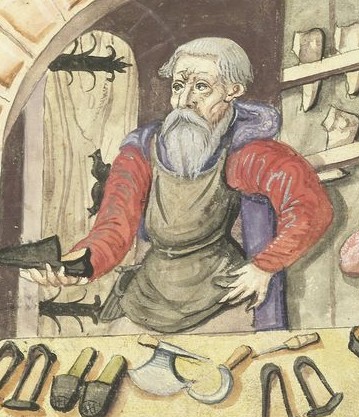
|
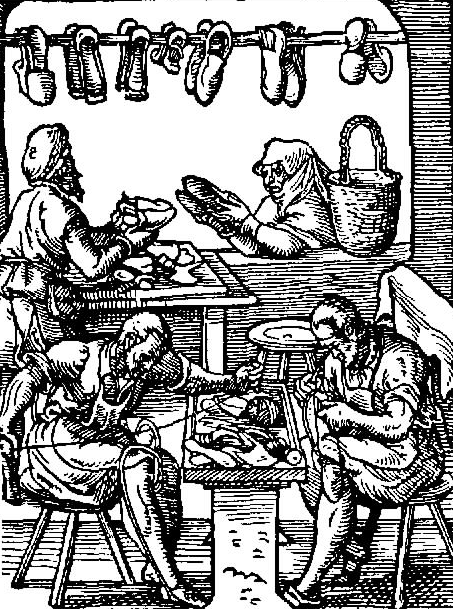
|
|
As mentioned before, as the 17th century rolls around, there are a larger number of images available of shoemakers (check Marc’s site), and the far majority of the images show the over-the-neck type of apron, which seems to indicate that this has become the more common and popular style of apron.
